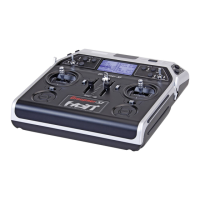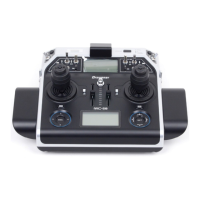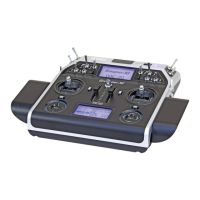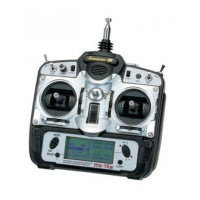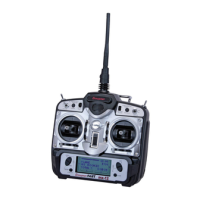168
Program description - Wing mixers
Mixer functions
The individual options in the »Wing mixers« menu
are discussed below, separately for single-, dual- and
multi-flap models. Before we start, a number of re-
marks on the differentials for ailerons and flaps:
Aile. diff. or Diff. (Aileron-Differential)
0%
0%0%
–––
–––
normal
0%
Aile.diff.
Brake settings
AI
Wing mixers
EL AI
RU
0%
fl.pos
AILE
normal
Diff.
AiI-tr
AI
+100%
+100%
0%
Note:
The upper display corresponds to the choice
of “2AIL” in the line “Aileron. / Flaps” of the
“Model type” menu and the bottom of a
choice of “2/4 AIL 1/2/4 FL”.
For aerodynamic reasons, the drag generated on an
aileron oriented downwards is greater than that gener-
ated by the same aileron when it is oriented upwards
by the same amount. One effect of this unequal dis-
tribution of drag produces is a yawing motion around
the vertical axis and, accordingly, a “turning away” from
the intended direction of flight, which is why this unde-
sirable side effect is also termed “adverse yaw”. This
effect is naturally greater on the comparably long aero-
foils possessed by model gliders, compared to e. g.
powered aircraft models, which generally have relatively
short moment arms. For the former, it must normally
be compensated for by making a simultaneous rudder
deflection in the opposite direction. However, this rud-
der deflection also generates drag and therefore further
degrades flight characteristics.
If, on the other hand, a differential is applied to the
aileron orientations, by giving the aileron oriented
downwards a smaller deflection than the aileron ori-
ented upwards, the (undesirable) adverse yaw can be
reduced – and possibly entirely negated. However, the
basic precondition for this is that each aileron must
have its own servo present, which can therefore also
be embedded straight into the aerofoils. In addition,
the shorter linkage paths produce an additional benefit:
reproducible aileron configurations that also exhibit less
“play”.
0% (normal)
50% (differential)
100% (split)
Unlike mechanical solutions, which not only commonly
need to be designed and built in when construct-
ing the model but also produce a slightly increased
“play” in the control system for strong differentials, the
transmitter-based differential typically used today offers
considerable benefits.
The degree of differential can be changed at any time,
for example, and, in extreme circumstances, the down-
ward deflection of an aileron, in what is termed a “split”
position, can be suppressed entirely. This approach not
only reduces or even suppresses “adverse yaw”, but
Note:
If the offset is not set right at the end of the
transmitter travel, the rest of the travel is a
“dead zone”, i. e. the transmitter control does
not inuence any mixers on the “Brake settings”
sub-menu. Otherwise, the mixer travel is expanded
back to 100 % automatically.
All other mixers in the »Wing mixers« menu have their
neutral point with the control at its centre, i. e. they
have no effect at this control position. The value set is
mixed in at full travel.

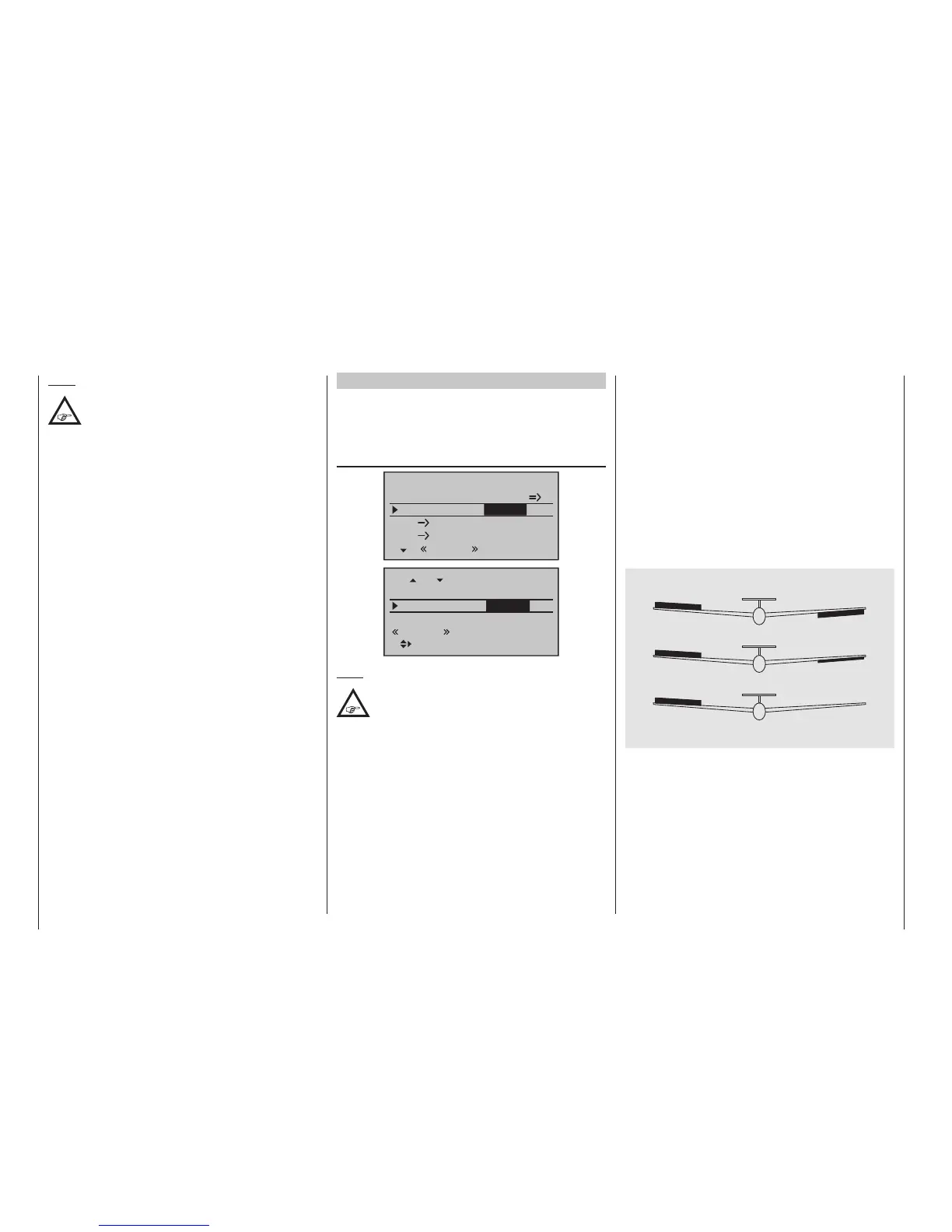